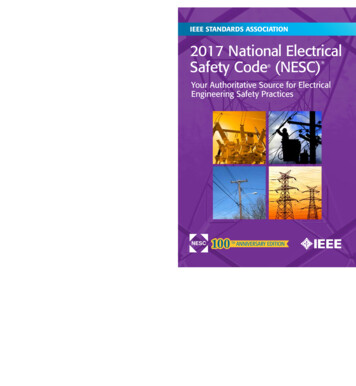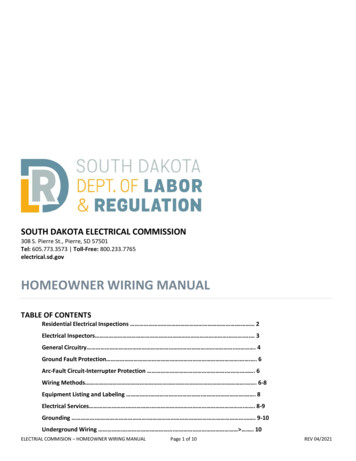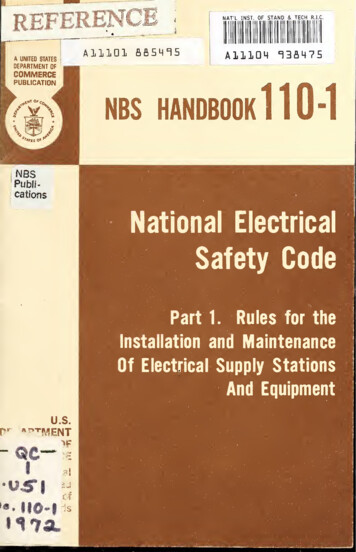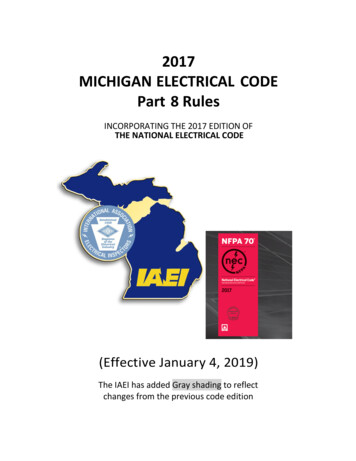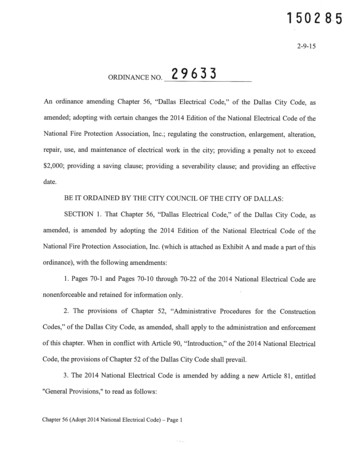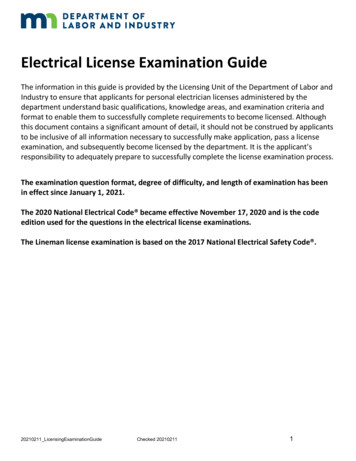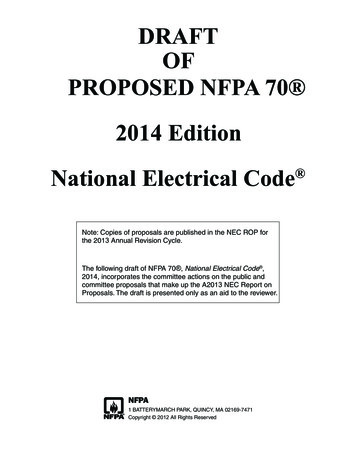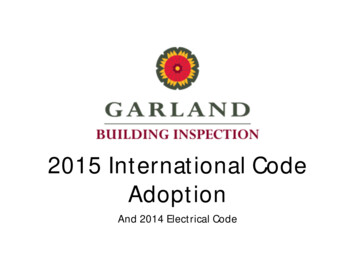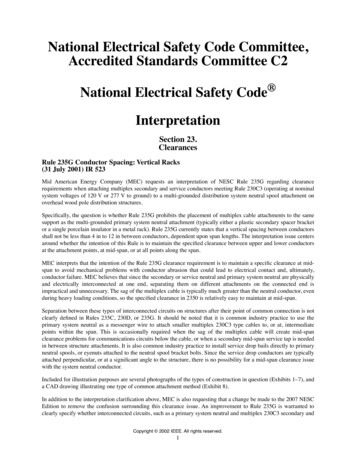
Transcription
National Electrical Safety Code Committee,Accredited Standards Committee C2National Electrical Safety Code InterpretationSection 23.ClearancesRule 235G Conductor Spacing: Vertical Racks(31 July 2001) IR 523Mid American Energy Company (MEC) requests an interpretation of NESC Rule 235G regarding clearancerequirements when attaching multiplex secondary and service conductors meeting Rule 230C3 (operating at nominalsystem voltages of 120 V or 277 V to ground) to a multi-grounded distribution system neutral spool attachment onoverhead wood pole distribution structures.Specifically, the question is whether Rule 235G prohibits the placement of multiplex cable attachments to the samesupport as the multi-grounded primary system neutral attachment (typically either a plastic secondary spacer bracketor a single porcelain insulator in a metal rack). Rule 235G currently states that a vertical spacing between conductorsshall not be less than 4 in to 12 in between conductors, dependent upon span lengths. The interpretation issue centersaround whether the intention of this Rule is to maintain the specified clearance between upper and lower conductorsat the attachment points, at mid-span, or at all points along the span.MEC interprets that the intention of the Rule 235G clearance requirement is to maintain a specific clearance at midspan to avoid mechanical problems with conductor abrasion that could lead to electrical contact and, ultimately,conductor failure. MEC believes that since the secondary or service neutral and primary system neutral are physicallyand electrically interconnected at one end, separating them on different attachments on the connected end isimpractical and unnecessary. The sag of the multiplex cable is typically much greater than the neutral conductor, evenduring heavy loading conditions, so the specified clearance in 2350 is relatively easy to maintain at mid-span.Separation between these types of interconnected circuits on structures after their point of common connection is notclearly defined in Rules 235C, 230D, or 235G. It should be noted that it is common industry practice to use theprimary system neutral as a messenger wire to attach smaller multiplex 230C3 type cables to, or at, intermediatepoints within the span. This is occasionally required when the sag of the multiplex cable will create mid-spanclearance problems for communications circuits below the cable, or when a secondary mid-span service tap is neededin between structure attachments. It is also common industry practice to install service drop bails directly to primaryneutral spools, or eyenuts attached to the neutral spool bracket bolts. Since the service drop conductors are typicallyattached perpendicular, or at a significant angle to the structure, there is no possibility for a mid-span clearance issuewith the system neutral conductor.Included for illustration purposes are several photographs of the types of construction in question (Exhibits 1–7), anda CAD drawing illustrating one type of common attachment method (Exhibit 8).In addition to the interpretation clarification above, MEC is also requesting that a change be made to the 2007 NESCEdition to remove the confusion surrounding this clearance issue. An improvement to Rule 235G is warranted toclearly specify whether interconnected circuits, such as a primary system neutral and multiplex 230C3 secondary andCopyright 2002 IEEE. All rights reserved.1
NATIONAL ELECTRICAL SAFETY CODE —INTERPRETATIONservice cable (that are mechanically and electrically attached to the primary neutral), can be considered the samecircuit for determining vertical clearance attachment requirements, or if separation needs to be maintained betweenthem. If separation needs to be maintained, then it should be specified where it needs to be maintained: at theattachments, at mid-span, or throughout the entire length of the span.InterpretationThe Interpretations Subcommittee has considered subject Interpretation Request and has developed a consensusreport as follows:“Rule 235C specifies vertical clearances for line wires, conductors, and cables located on the same supportingstructure. Line conductors and cables extend along the route of the line (pole-to-pole) and do not include verticalor lateral conductors (see definition: line conductor). Rule 235C1 and Table 235-5 specify the basic clearancesfor line conductors and cables at the supports; Exception 1 permits lesser spacing under specified conditions.As you state in your letter, Rule 235G allows vertical spacing of 4 to 12 in for conductors or cables, dependentupon span length (and/or use of intermediate spacers). Application of this rule is limited to construction meetingthe requirements of the rule and the spacing applies both at the pole and in the span. The neutral and Rule 230C3multiplex cables shown in your Exhibit 8 drawing are line conductors; Rule 235G requires vertical spacing at thepole as well as in the span. Consequently, the construction shown does not meet NESC requirements.Rule 235C does not apply to non-line conductors or cables, such as service drops attached at a pole. Verticalclearance between the Rule 230C3 service drops and associated neutral conductors, as shown in your Exhibits 3–6, is not required.The mid-span tap shown in your Exhibit 7 is a combination of a line conductor and a service drop. Thisconfiguration is not specifically covered by either Table 235-5 or Rule 235G. Consequently Rule 012 applies.Also, note that all other applicable rules must be met, such as rules specifying bonding and strengthrequirements.”Copyright 2002 IEEE. All rights reserved.2
EXHIBIT1
EXHIBIT2
EXHIBIT3
EXHIBIT4
EXHIBIT5
EXHIBIT6
EXHIBIT7
Rule 235C does not apply to non-line conductors or cables, such as service drops attached at a pole. Vertical clearance between the Rule 230C3 service drops and associated neutral conductors, as shown in your Exhibits 3- 6, is not required. The mid-span tap shown in your Exhibit 7 is a combination of a line conductor and a service drop. This

